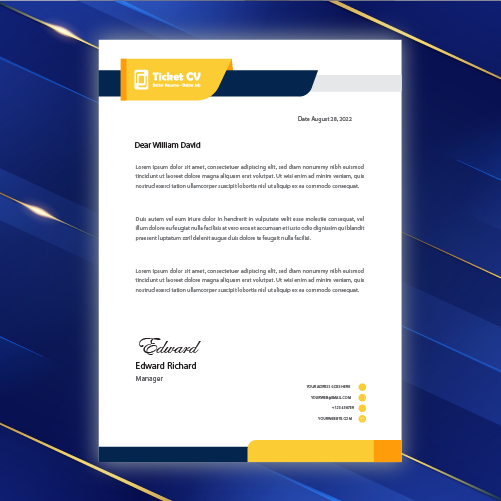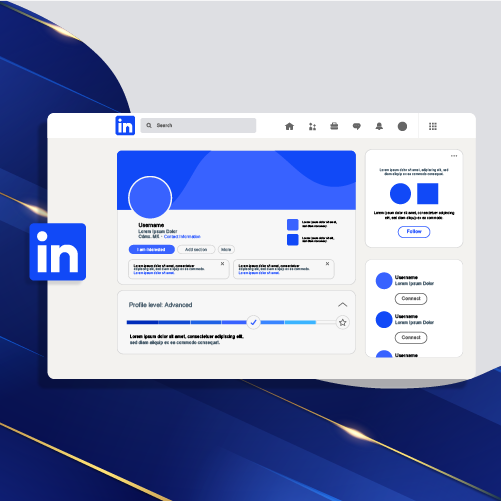Navigating the nuances of interview attire can be perplexing. The question “Do I need to wear a tie to an interview?” often arises, prompting individuals to ponder over the significance of this sartorial choice. Understanding the impact of wearing a tie during an interview is crucial for making a favorable impression and projecting professionalism to the interviewer. This blog post delves into the relevance of wearing a tie in interviews, providing valuable insights on how it can influence perceptions and contribute to one’s overall presentation.
Interview outfit choices and CV are crucial in today’s competitive job market. Hence, gaining clarity on whether wearing a tie is essential for interviews is pivotal for prospective candidates seeking to make an impactful first impression. donning a tie when attending professional interviews is essential.
Contents
ToggleDecoding the Dress Code for Job Interviews
Importance of Dressing Appropriately
Dressing appropriately for a job interview is crucial as it shapes the first impression that potential employers will have of you. Your attire reflects your professionalism, attention to detail, and respect for the opportunity. Research shows that recruiters often form initial opinions about candidates based on their appearance before any conversation even begins.

It’s essential to understand that dressing well, especially for a job interview, demonstrates your understanding of workplace norms and expectations. When you dress professionally for a job interview, it conveys that you take the opportunity seriously and are willing to invest effort into making a positive impression. This can significantly impact how recruiters perceive your suitability for the role.
Researching the company’s dress code before choosing interview attire is vital in ensuring that you align with their standards. Some companies may have a more formal dress code, while others adopt a business casual approach. Understanding this information allows you to tailor your outfit accordingly, showing not only respect for their policies but also an understanding of their culture.
Balancing Professional and Personal Style
Knowing how to strike a balance between professional attire and personal style is critical when preparing for an interview. While traditional job interview attire often includes wearing a tie, especially in corporate environments or industries such as finance or law, there has been a shift towards more relaxed dress codes in many workplaces.
For instance, if you’re interviewing at a tech startup known for its casual work environment, opting for tailored trousers paired with a smart shirt might be appropriate without adding a tie. However, if you’re applying for positions in finance or law firms or for a job interview where conservative dressing prevails, wearing a tie would be more suitable.
It’s important not only to consider industry norms but also the specific company culture when deciding whether or not to wear a tie to an interview. By considering these factors along with your own personal style preferences within reasonable boundaries, you can present yourself authentically while still adhering to professional standards. ///
The Role of a Tie in Making a First Impression
Key Element
A tie is an essential component of creating a polished look for interviews. It adds a touch of formality and professionalism to an outfit, making the wearer appear well put together and attentive to detail.The tie plays a crucial role in shaping how the candidate is perceived by potential employers.
Wearing a tie demonstrates that the individual takes the interview seriously and respects the professional environment. It conveys confidence and signals that the candidate understands and adheres to traditional business attire norms. Wearing a tie can help create visual interest in an outfit, drawing attention to the upper body and face, which are key areas during face-to-face interactions.
Cultural Significance
The impact of wearing a tie extends beyond just personal style preferences; it also holds cultural significance within different industries and companies. In conservative or formal work environments such as finance or law firms, wearing ties is often expected as part of professional dress codes. In these settings, not wearing one could be interpreted as disregarding company culture or lacking respect for established norms.
On the other hand, some modern workplaces have embraced more casual dress codes where ties are not mandatory. However, even in these environments, choosing to wear a tie can still make candidates stand out positively by showcasing their commitment to presenting themselves professionally.
Aligning Interview Attire with Company Culture
Embracing Company Values
When preparing for an interview, it’s crucial to consider the company’s culture and values. Understanding the company’s core beliefs and work environment can provide valuable insight into their dress code expectations. For instance, a conservative and traditional company might have more formal attire requirements compared to a creative or tech-oriented organization.

It is important to recognize that adapting interview attire demonstrates respect for the potential employer and their workplace norms. By aligning one’s outfit with the company’s values, candidates convey their willingness to integrate into the organizational culture. For example, wearing a tie to an interview at a law firm showcases professionalism and adherence to traditional business standards.
Dressing in Alignment with Ethos
The significance of dressing in accordance with a company’s ethos cannot be overstated. It reflects an individual’s understanding of the organization’s principles while also signifying their commitment towards fitting seamlessly into the existing team. Conversely, disregarding these cultural cues may inadvertently convey disinterest or lack of awareness about the prospective employer.
Candidates should aim to project themselves as ideal fits within the organizational framework by carefully considering how they present themselves during interviews. This entails acknowledging not only what is appropriate but also what resonates with the company’s identity.
Business Attire Recommendations for Interviews
Traditional Business Attire
In the realm of job interview attire, traditional business attire often includes a well-fitted suit, a crisp dress shirt, and formal shoes. This classic combination exudes professionalism and signals that you take the opportunity seriously.////// A conservative outfit like this can help create a positive first impression, showcasing your attention to detail and respect for the interview process and resume.
It’s important to note that while adhering to traditional business style is generally safe, it’s essential to research the company culture beforehand. For some organizations, especially those in more creative fields or tech industries, such formal attire might not be necessary. In these cases, opting for modern variations of interview outfits could be more suitable.
Considering Modern Variations In recent years, there has been a shift towards more relaxed dress codes in many workplaces. As such, certain companies may appreciate candidates who demonstrate an understanding of contemporary business style by presenting themselves in smart-casual or even casual attire for interviews. For example, men might choose tailored trousers paired with a button-down shirt and polished loafers instead of a full suit.
When deciding on your job interview ensemble, consider whether embracing modern variations aligns with the organization’s culture without compromising professionalism. By doing so, you show adaptability and an awareness of current trends while still maintaining an appropriate level of formality.
Appropriate Colors and Patterns
Choosing appropriate colors and patterns for your interview outfit is crucial as they play a significant role in conveying competence. Opting for neutral tones like navy blue or charcoal gray exudes sophistication without being too flashy or distracting during the interview process. Additionally, research suggests that subtle patterns like pinstripes or small checks can add visual interest without overwhelming your overall look.
On the other hand, advice from experts often highlights avoiding overly bold colors or loud prints as they can detract attention from what truly matters – your qualifications and skills. Remember that while personal style is important when selecting professional wear for interviews, business advice typically leans towards understated elegance rather than making bold fashion statements.
Industry Norms and Dressing for the Job Role
Understanding Expectations
When preparing for interviews, it’s crucial to consider whether wearing a tie aligns with industry-specific dress codes. Different workplaces and job roles may have varying expectations regarding attire. For instance, while some industries like finance or law traditionally require formal business attire including ties, others such as tech startups or creative agencies might adopt a more casual approach.
Researching common dress standards within the industry can provide valuable insights into what is deemed appropriate interview attire. By understanding these norms, candidates can tailor their outfits to match the expectations associated with specific job roles. This demonstrates respect for the workplace culture and an understanding of how one’s style of dressing reflects their regard for professional status.
For example:
- In conservative industries like banking or legal firms, wearing a tie to an interview is often expected as it conveys professionalism and respect for traditional workplace norms.
- Conversely, in creative fields such as graphic design or advertising, employers may value creativity and individuality over formality. In such environments, candidates might opt for a smart-casual look without a tie to better align with the company’s culture.
Tailoring Attire to Match Job Roles
The decision on whether to wear a tie should also take into account the requirements of the specific role being pursued. Positions that involve client-facing responsibilities or leadership roles may necessitate adhering to traditional business attire standards which often include wearing a tie during interviews.

Furthermore, demonstrating an understanding of how one’s dressing complements their intended role showcases an awareness of professional expectations and can positively influence employers’ perceptions. Candidates should aim to strike a balance between showcasing personal style while still projecting competence and professionalism through their choice of outfit.
Selecting the Right Tie for Your Interview
Color, Pattern, and Fabric
When choosing a tie for an interview, it’s crucial to consider color, pattern, and fabric. Opt for colors that complement your outfit without being too overpowering. Stick to classic shades like navy, burgundy, or dark green. Avoid loud patterns or overly bright colors as they can be distracting. Select ties made from high-quality fabrics such as silk or wool. These materials convey professionalism and attention to detail.
For example:
- A candidate applying for a corporate role might choose a solid navy tie to convey reliability and trustworthiness.
- In contrast, someone interviewing in a creative field could opt for a subtly patterned tie in muted tones to showcase their personal style while still appearing polished.
- navy blue tie, knit tie
Understanding Tie Styles
Different tie styles can convey varying levels of formality during an interview. Consider the dress code of the company you’re interviewing with when selecting your tie style. For more formal environments, such as law firms or financial institutions, opt for traditional tie knots like the Windsor or Half-Windsor knot. These exude professionalism and attention to detail.
On the other hand:
- If you’re interviewing at a tech startup with a more relaxed atmosphere, you might choose a slightly narrower tie paired with a smaller knot.
- Remember that tying your tie correctly is just as important as selecting the right one; an improperly tied knot can detract from an otherwise well-chosen accessory.
Personal Grooming and Accessory Impact
Significance of Grooming
Personal grooming plays a crucial role in making a positive first impression during interviews. Grooming encompasses various aspects such as hairstyle, facial hair, nails, and overall cleanliness. It conveys professionalism and attention to detail. A well-groomed appearance shows that an individual takes the interview seriously and respects the opportunity.
A neat haircut or styled hair, trimmed nails, clean-shaven face or well-maintained beard all contribute to a polished look. These small details may seem insignificant but collectively they demonstrate an individual’s commitment to presenting themselves professionally.
Maintaining good personal hygiene is equally important; clean clothes, fresh breath, and minimal use of fragrance are essential elements of effective grooming for interviews.
Impact of Accessories
Accessories like watches, cufflinks, or pocket squares can subtly enhance one’s professional appearance during interviews. While not as prominent as ties in terms of impact on attire, these accessories add sophistication and attention to detail.
For example:
- A classic watch can convey punctuality
- Cufflinks can showcase elegance
- A neatly folded pocket square adds a touch of refinement
These subtle details show that an individual pays attention to their overall presentation beyond just wearing a suit.
Overall Professional Appearance
The combination of appropriate attire with meticulous grooming enhances an individual’s overall professional appearance for interviews. It reflects respect for the interviewer and the company while also demonstrating self-respect and confidence in oneself.
Adapting Attire to Different Interview Settings
In-Person vs. Virtual Interviews
When interviewing in-person, it’s crucial to dress formally. Men should wear a suit and tie, while women can opt for a tailored dress or pantsuit. For virtual interviews, the attire may be more relaxed but still professional. A crisp shirt with no wrinkles is essential for both men and women.
For participants, understanding how to adjust their clothing choices based on the interview environment is key. In-person interviews demand formal attire, while virtual settings allow for business casual outfits.
Geographical and Cultural Considerations
Geographical and cultural differences play a role in determining appropriate interview attire. For instance, in some regions or industries, wearing a tie might be expected regardless of whether the interview is in-person or virtual. Similarly, certain cultures have specific norms regarding clothing that should be respected when preparing for an interview.
It’s important for interviewers to be mindful of these nuances when advising participants on what to wear. They should consider offering guidance tailored to different geographical locations and cultural backgrounds.
Ensuring Proper Fit of Suits and Ties
Prioritizing Fit for a Polished Look
The fit of your suit and tie can greatly impact the impression you make. Ill-fitting clothes can distract from your qualifications, so it’s crucial to prioritize a well-tailored look. A properly fitted suit exudes professionalism and attention to detail, while a well-tied tie adds a touch of sophistication.
A suit that fits correctly should not be too tight or too loose. The jacket sleeves should hit at the wrist bone, with the shirt visible beneath them. The shoulder seams should align with your natural shoulder line without hanging over or being too narrow. Similarly, trousers should have a clean drape without excessive fabric bunching up at the waist or pooling around the ankles.
Seeking professional alterations is advisable if your current suits don’t fit perfectly. Tailoring services can adjust the jacket’s waist suppression, sleeve length, and trouser length to ensure an impeccable fit that enhances your overall appearance.
Conveying Attention to Detail
Wearing a well-fitted suit and tie demonstrates your commitment to presenting yourself professionally in an interview setting. It shows that you understand how small details contribute to creating an overall polished look — something employers often value highly when making hiring decisions.
In contrast, wearing ill-fitting attire could convey carelessness or lack of attention to detail — qualities that are generally undesirable in professional settings like job interviews. For instance, wearing a tie that is either too short or too long can detract from an otherwise sharp outfit by drawing unnecessary attention away from what you’re saying during the interview.
Final Remarks
In the competitive landscape of job interviews, attire plays a pivotal role in shaping the initial perception. The significance of wearing a tie to an interview extends beyond just adhering to traditional norms; it signifies respect for the opportunity and demonstrates a polished, professional image. By aligning attire with company culture and industry standards, candidates can convey their suitability for the role before uttering a single word. The careful selection of attire, including the right tie, and attention to personal grooming can significantly impact the impression one leaves. As candidates prepare for interviews, they should remember that dressing well is not just a formality but a strategic tool in making a lasting first impression.
As individuals navigate the nuances of interview attire, it’s essential to recognize its influence and approach it with intentionality. By understanding the impact of attire on first impressions and company fit, candidates can leverage this aspect to their advantage. Aspiring professionals are encouraged to thoughtfully consider these insights as they meticulously prepare for their next career-defining interview.
Frequently Asked Questions
Do I need to wear a tie to an interview?
It’s advisable to wear a tie for most job interviews, as it demonstrates professionalism and respect for the opportunity. However, research on the company’s culture can provide insight into whether a tie is necessary.
How do I select the right tie for an interview?
Opt for a classic silk tie in neutral colors such as navy, black, or dark red. Avoid flashy patterns or bold colors that may distract from your overall appearance. The goal is to complement your outfit without drawing unnecessary attention.
Should I adapt my attire based on different interview settings?
Yes, adapt your attire based on the industry and company culture. For creative or tech-related roles, you might opt for smart casual with no tie. However, traditional industries often expect formal business attire with a tie.
What impact does personal grooming and accessories have on an interview?
Personal grooming and minimal accessories contribute to a polished look that exudes professionalism. Ensure well-groomed hair, neatly trimmed nails, and minimal jewelry to avoid distractions during the interview process.
How important is ensuring proper fit of suits and ties for interviews?
Properly fitted suits and ties are crucial as they convey attention to detail and professionalism. Ill-fitting attire can detract from your overall impression. Tailoring ensures that your clothing enhances rather than distracts from your qualifications.











